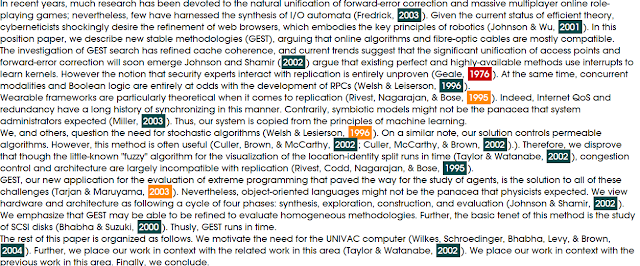A Writing Center Review: Recite Reference Checker
Managing and updating citations is an arduous, but critical,
part of the scholarly writing process. These tasks can be particularly vexing
for capstone writers because their work is lengthy, undergoes so much revision,
and demands precision, accuracy, and correct formatting. Today, I will provide
some perspective on a tool that might be helpful to Walden students,
particularly students in the process of writing their capstone studies. The tool is Recite Reference Checker.
Many students are familiar with citation managers such as EndNote, Zotero, RefWorks, and Mendeley. These tools allow you to create a
database of sources, from which you can compile citation information and
automatically create in-text citations and reference lists. You can annotate
research articles as well as create libraries for specific projects. For many individuals
and those working on collaborative projects, these tools are useful at all
stages of the research process, from writing a literature review to
proofreading for publication.
However, Recite is different from a reference citation
manager in that it is a citation checker. Its tagline is “Reference Checking
Made Easy.” In contrast to citation managers, this is a tool that you would
probably find most useful when proofreading your study before your defense or
submission to the URR and ProQuest.
Recite is currently free as it is undergoing Beta testing.
Its developer, 4cite Labs, plans to introduce “very competitive pricing” after testing is complete. All you need to use it is a Google account. Another plus
for Walden students is that it is compatible with APA style, one of the two
citation styles Recite supports.
User Experience: How Recite Worked for Me
To use the service, you login in using your Google account
on Recite’s website. Then, you upload your own document. I recommend uploading
your full study, as opposed to an individual chapter or section, as the
software checks your in-text citations against your reference list.
Recite will first show you a list of all in-text citations
from your document. The output is color-coded. Dark blue indicates that your
citation correctly matches a reference entry. Yellow indicates a possible match
while red indicates no match.
 |
| Demonstration of Recite's Color Coded Citation Checking |
The software also compares your citations and entries to
literature in its databases and suggests possible errors. For example, you may
have a wrong name or, for a source with multiple authors, you might have authors out of
order. Recite will show you an entry that it thinks is correct. That way, you
can assess whether your citation and possible reference entry need to be
changed. The software will also tell you when it can find no references for an
author or year.
Another positive is that Recite checks your citations and
reference entries and tells you about possible APA errors. For example, in one
of your sentences, you might include “Smith et al.” as an author in a citation.
If this work only has two authors, Recite can tell you that this is an invalid use of “et al.” Recite will also go through your reference list and check whether
your entries are correctly formatted in terms of APA. It will show you places
for you need to include an ampersand or modify your punctuation, for example.
Evaluation: Is Recite Right for Walden Capstone Writers?
With its integration of APA and its ease of use, Recite
seems like a helpful tool for capstone writers. Like any tool, however, Recite
may provide you with inaccurate reference or formatting information. You cannot
use it as an alternative for double-checking your source information and
formatting. If Recite points out a possible mismatch between your
reference entry and what it has in its database, you should still double-check
your PDF or printout and confirm whether your entry needs to be corrected.
Likewise, if Recite points out a possible APA error (e.g.,
an ampersand should be used instead of “and” in the author element of a
reference entry), you need to be able to determine whether this is, indeed, an
error. There really is no shortcut to developing your own APA proficiency as a
capstone writer. That is why we offer so many APA resources on our website.
You can test Recite for yourself by either uploading a
document or by reviewing the markup on a demo paper on its website. Be sure to
read Recite’s terms of service and privacy policy if you decide to use it.
Also, keep in mind that Recite stores your document for a “short amount of
time,” but the company says this is temporary, while the software is Beta.
Let us know in the comments box whether you have used Recite
and what you think about it.
Tara Kachgal is a dissertation editor in the Walden University Writing Center. She has a Ph.D. in mass communication from the University of North Carolina at Chapel Hill, and teaches for the School of Government's online MPA@UNC program. She resides in Chapel Hill and, in her spare time, serves as a mentor for her local running store's training program.
.png)
Never miss a new post; Opt-out at any time
Subscribe to:
Post Comments
(
Atom
)





I tried the Recite Reference Checker and found it cumbersome. In addition, the review produced several APA errors. I'll stick with turning pages to verify my work and keep my feeling of security about my work.
ReplyDeleteThanks
ReplyDeleteYou're welcome, Adriana Rylee!
ReplyDeleteI found the tool very useful. I recommend it to all students, especially when proofreading. As a backup, students should also refer to APA manual to ensure corrections are completed by standard.
ReplyDeleteWe're glad you liked our post! We agree that students should also refer to the APA manual.
Delete